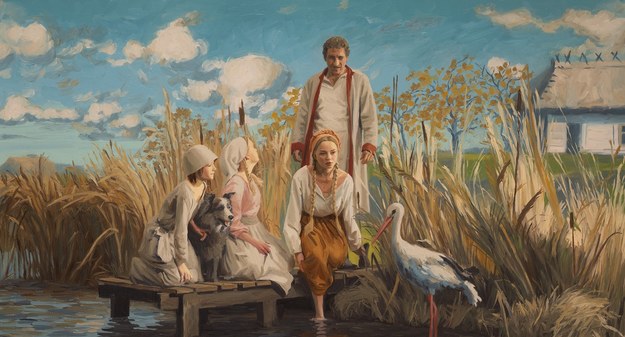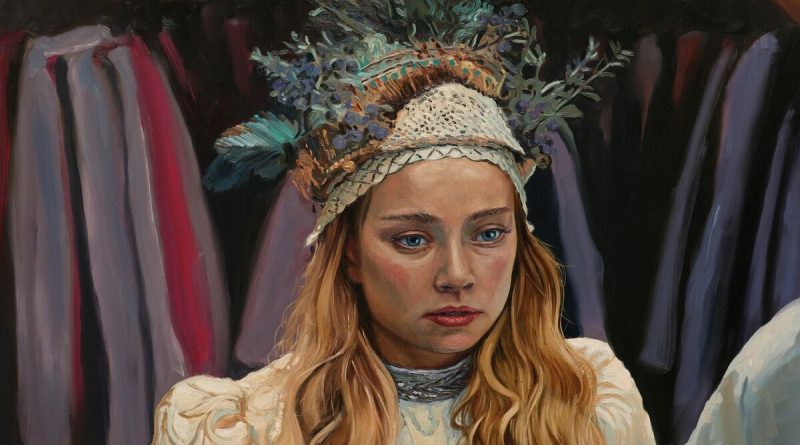The Peasants
15One of the most labour intensive forms of filmmaking has to be animation. And although it’s come on leaps and bounds since its origins of hand-painted cels by artists, thanks to the advances in computer technology, they are still years in the making.
It can therefore only be considered a form of artistic madness then to return to that old form of animation, by painstakingly creating every frame using brushes and oils. But that’s exactly what couple DK and Hugh Welchman have done – again – with their latest film.

OK so maybe we don't eat all of him at once, maybe just start with a leg?!
Autumn arrives in the rural Polish village of Lipce, and love is in the air. Jagna (Kamila Urzedowska) is a beautiful young peasant, who gets a lot of attention from the male population of the village. However she’s attracted to Antek (Robert Gulaczyk), the son of Maciej Boryna (Miroslaw Baka) who is the richest farmer in the village.
But it just so happens that Boryna is a recent widow, and is encouraged by the locals to take on another wife as soon as possible, with many suggesting that Jagna would be the perfect candidate.
He is aware of gossip regarding his son’s involvement with Jagna, but it doesn’t stop him from not only pursuing her, but taking her as his new bride.
Of course Jagna has little say in the matter, and must follow both traditional rules and her mother’s wishes, but that doesn’t mean that her heart agrees.
Meanwhile, the whole scenario gets tongues wagging throughout the village, as salacious gossip mounts and spreads regarding the goings-on in their village.

I just know some bird is going to fly down and use my hat as a nest.
The Welchman’s – consisted of Polish filmmaker Dorota Kobiela and her British filmmaker husband Hugh – are clearly a glutton for punishment, having already devoted a large chunk of their lives to the similarly produced animated feature Loving Vincent in 2017.
This time their source material is based on Polish Novelist Władysław Reymont's Nobel Prize-winning novel of the same name. It is a Shakespearian-like tale based on what brings a community together, and what also tears it apart. It highlights the dated rituals and laws of the land, as well as the hierarchy of both families and communities, with women suffering in both, being treated roughly on par as the livestock.
The most striking element of the film however has to be the animation, which much like the last film, manages to be the closest thing to bringing an oil painting to life. It’s a stunning technique, where the likeness of the actors is visible, as they were filmed acting for the process, with artists seemingly applying paint to every frame of the film afterwards, which probably isn’t a million miles away from how it was achieved. So in a sense it’s a multi media piece featuring shot film and animation combined. The result is truly remarkable, and shows how animation can be produced for an adult audience.
It’s made even more remarkable when you consider the fact that a number of the film’s artists, who toiled on the project for a staggering 200,000 hours, were based in Ukraine during the war, often having to work around the many power cuts and threats of being bombed to get the job done. Now that’s dedication.
Although in truth, the story lacks originality and becomes fairly predictable towards the end, the way it’s presented visually is a veritable feast for the eyes, proving that this form of animation truly is a work of art.
